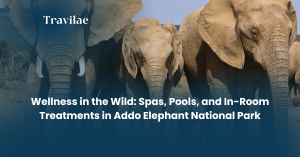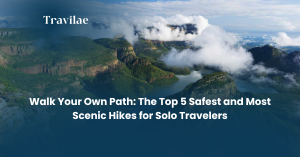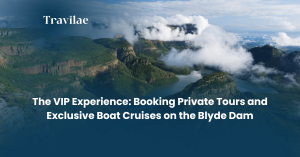Did you know the Khoi called Augrabies “Aukoerebis”—the Place of Great Noise—because of the thunderous roar as the Orange River plunges 56 meters into a dramatic granite gorge? For solo travelers with a camera, Augrabies Falls National Park is a paradise of raw power, shifting light, and surreal desert landscapes. This guide will help you capture the essence of Augrabies—its mighty falls, unique wildlife, and stark beauty—on your own.
Table of Contents
Best Time and Light for Photography

- Flood season (February–April): The falls are at their most dramatic, with torrents of water and mist creating dynamic, moody shots.
- March to May: Cooler temperatures and beautiful light make this the ideal season for both landscape and wildlife photography.
- Sunrise and sunset: The golden hour brings out the warm hues in the granite and softens the water’s glare, perfect for landscape shots and long exposures.
- Night: The falls are illuminated from 20:00–22:00, offering a unique opportunity for creative low-light and long-exposure images.
Top Photography Spots in Augrabies Falls National Park
- Main Waterfall Boardwalks: Multiple viewpoints offer dramatic perspectives of the falls and gorge, all within easy walking distance of the rest camp and restaurant.
- Moon Rock: This massive granite dome provides panoramic views of the park and is especially stunning at sunrise or sunset.
- Oranjekom and Ararat Viewpoints: These spots offer sweeping vistas of the Orange River gorge and rugged terrain.
- Arrow Point and Twin Falls: Accessible via short hikes, these locations provide unique angles and quieter settings for landscape and wildlife shots.
- Gorge Cottage Area: If you stay here, you’ll have exclusive sunrise and sunset access to some of the park’s most breathtaking views.
Essential Gear for Solo Photography

- Camera: Whether you use a DSLR, mirrorless, or smartphone, the best camera is the one you have and know how to use.
- Lenses:
- Wide-angle lens (15–35mm): For capturing the full sweep of the falls and dramatic landscapes.
- Telephoto lens (100–500mm): For isolating wildlife, distant features, and compressed landscape shots.
- Versatile zoom (24–70mm): Great for general use and environmental portraits.
- Tripod: Essential for long exposures (silky water effects), low-light shots, and self-portraits.
- Remote shutter or timer: For sharp images during long exposures and for solo traveler self-portraits.
- Polarising filter: Reduces glare from wet rocks and enhances colors in the sky and water.
- ND filter: Allows for longer exposures even in bright daylight, perfect for smoothing the rushing water.
- Spare batteries and memory cards: There are few charging points in the park, so come prepared.
- Protective gear: Bring waterproof covers for your camera and yourself—mist and spray from the falls can be intense, especially during flood season.
Techniques and Tips for Stunning Shots
- Long Exposure: Use a tripod and slow shutter speed to turn the rushing water into silky ribbons of white—start with 1/15th of a second and experiment.
- Rule of Thirds: Compose your shots with key elements (falls, rocks, trees) along the grid lines for balanced, engaging images.
- Foreground Interest: Include rocks, quiver trees, or lizards in the foreground to add depth and scale to your landscapes.
- Golden Hour: Shoot at sunrise or sunset for soft, warm light that brings out the textures and colors of the granite and water.
- Night Photography: Try capturing the illuminated falls or the star-filled sky—Augrabies is perfect for astrophotography due to minimal light pollution.
- Wildlife: Be patient and quiet. Early morning and late afternoon are best for spotting klipspringers, giraffes, and the colorful Augrabies flat lizard.
Solo Photography Safety and Comfort
- Stay on Boardwalks: The rocks can be slippery, especially when wet. Stick to marked paths and viewpoints.
- Protect Your Gear: Use waterproof covers and dry bags, especially during flood season or if you venture close to the spray zones.
- Hydrate and Prepare: The climate is arid—carry water, sunscreen, and a hat.
- Pack Light and Smart: Choose versatile gear and a lightweight tripod to make moving between locations easier.
- Self-Portraits: Use a tripod and remote or your camera’s timer to capture yourself in the landscape—great for storytelling and memories.
Real-World Insight: A Solo Photographer’s Moment
After a long day of chasing the light, I set up my tripod on Moon Rock as the sun dipped low, painting the granite in fiery oranges and purples. Alone, I listened to the distant roar of the falls and watched as a klipspringer paused on a nearby boulder, perfectly framed against the glowing sky. In that moment, I realized that solo travel isn’t just about the places you see—it’s about the quiet, powerful connection you make with the world through your lens.
Sample 3-Day Photography Itinerary
Day 1:
- Arrive and settle in at the rest camp.
- Explore the main boardwalks and viewpoints, capturing the falls from multiple angles.
- Sunset shoot from Moon Rock.
- Night: Photograph the illuminated falls (20:00–22:00).
Day 2:
- Sunrise shoot at Oranjekom or Ararat viewpoint.
- Hike the Dassie Trail for unique gorge and wildlife shots.
- Afternoon: Photograph Arrow Point and Twin Falls.
- Evening: Try long exposures of the river and gorge as the light fades.
Day 3:
- Early morning wildlife photography near the rest camp.
- Explore the self-drive game area for giraffes, zebras, and quiver trees.
- Optional: Stay at the Gorge Cottage for exclusive sunrise/sunset views and astrophotography.
- Depart with a full memory card and a heart full of inspiration.
Photography FAQs
1. What’s the best time of year for waterfall photos?
February to April, when the falls are in full flood and most dramatic.
2. Can I photograph the falls at night?
Yes, the main falls are illuminated from 20:00 to 22:00 for overnight guests.
3. Do I need a tripod?
A tripod is highly recommended for long exposures, low-light, and self-portraits.
4. Is it safe to carry camera gear alone?
Yes, the park is safe for solo travelers—just stay on marked paths and secure your gear against water and dust.
5. Can I use a drone?
Check with SANParks for current drone regulations—permits may be required.
6. What wildlife can I photograph?
Look for klipspringers, giraffes, Hartmann’s mountain zebras, springbok, and the colorful Augrabies flat lizard.
7. Are there charging facilities?
Limited—charge all devices before arrival and bring power banks, especially if staying at remote cottages.
Conclusion
Solo photography at Augrabies Falls National Park is a journey into the heart of South Africa’s wild beauty—a place where the power of water, the colors of the desert, and the silence of solitude inspire every shot. With the right gear, a sense of adventure, and patience for the perfect light, you’ll leave with images (and memories) as unforgettable as the Place of Great Noise itself.
Ready to capture your own solo adventure? Share your best Augrabies photo tips or dreams in the comments!






